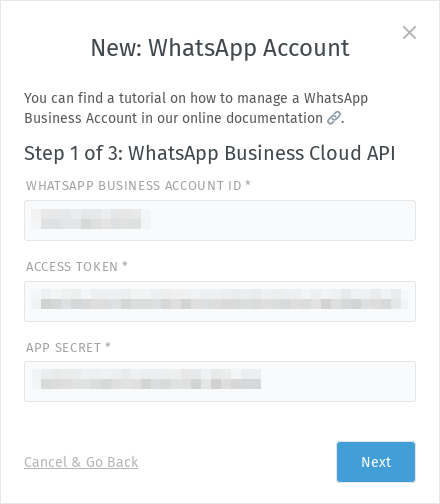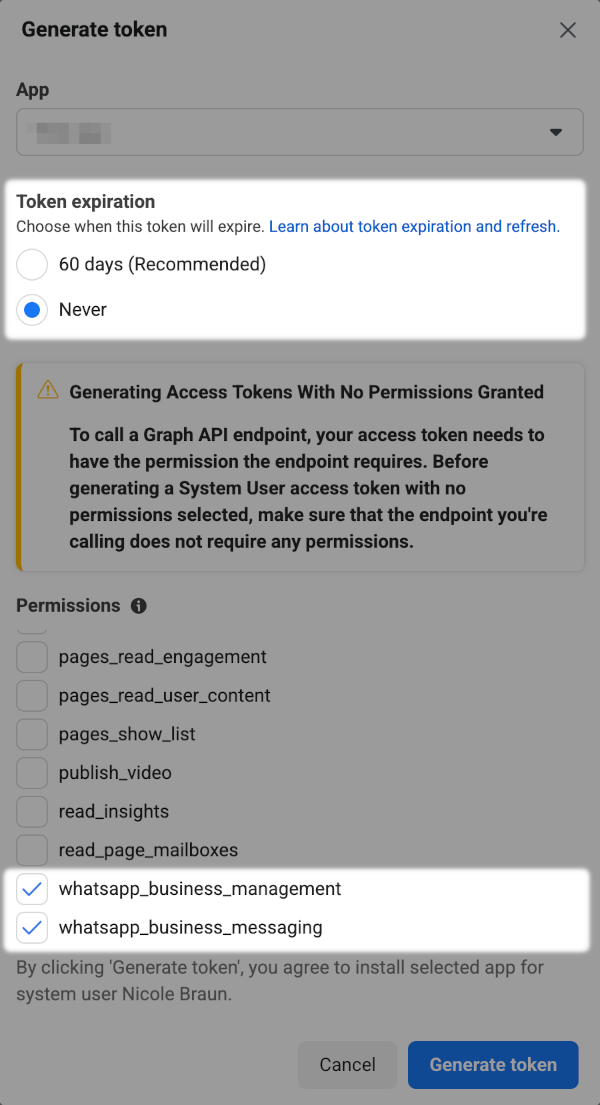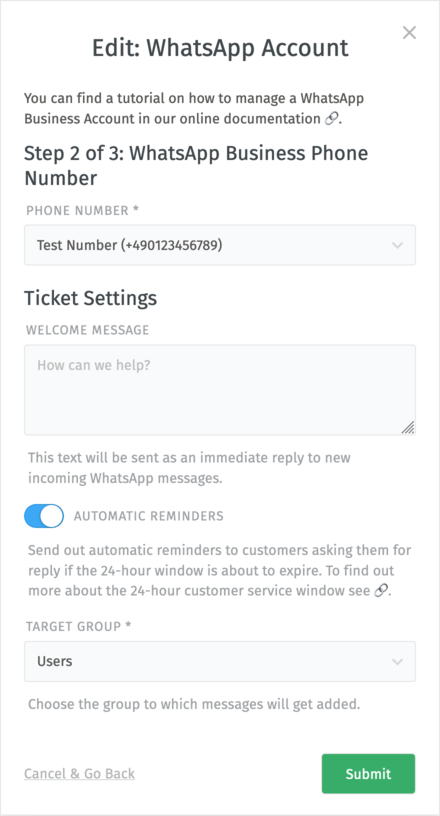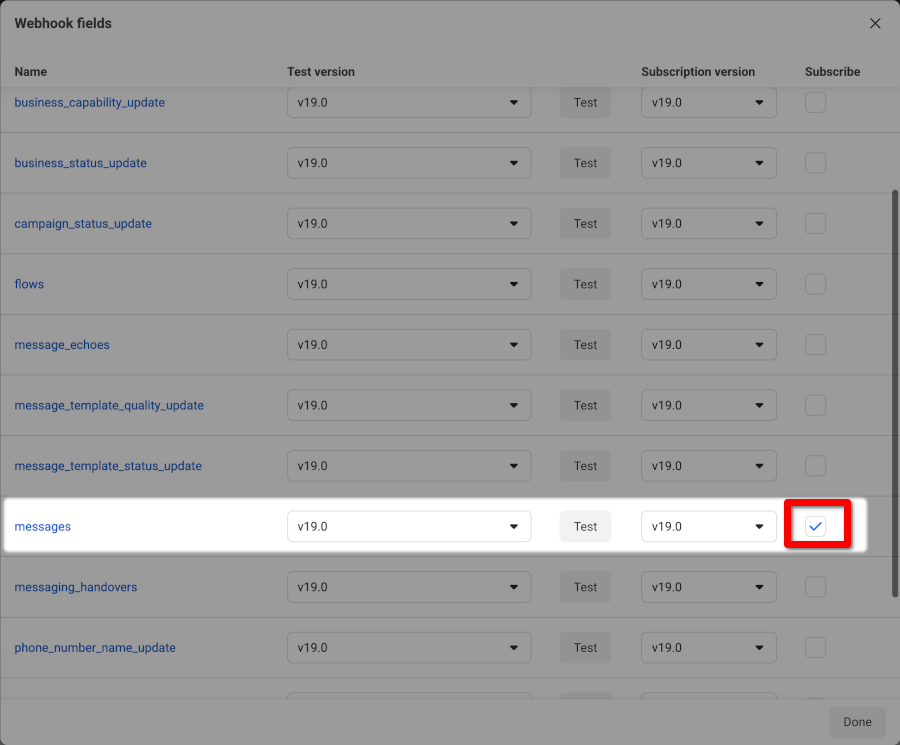Setup¶
First of all, make sure to match the prerequisites and to read the limitations above. If you did not setup your Meta Developer account, Meta Business account and Meta Developer app, first go to our preparation page and come back here after finishing it.
Then head over to Zammad’s admin panel to add the WhatsApp channel under “Channels > WhatsApp > Add Account” and follow the steps which are described below.
Step 1¶
In the first step you have to provide credentials of your account/app:
- WhatsApp Business Account ID
Enter your WhatsApp Business Account ID. You can find it in your app under “WhatsApp > API Setup”:
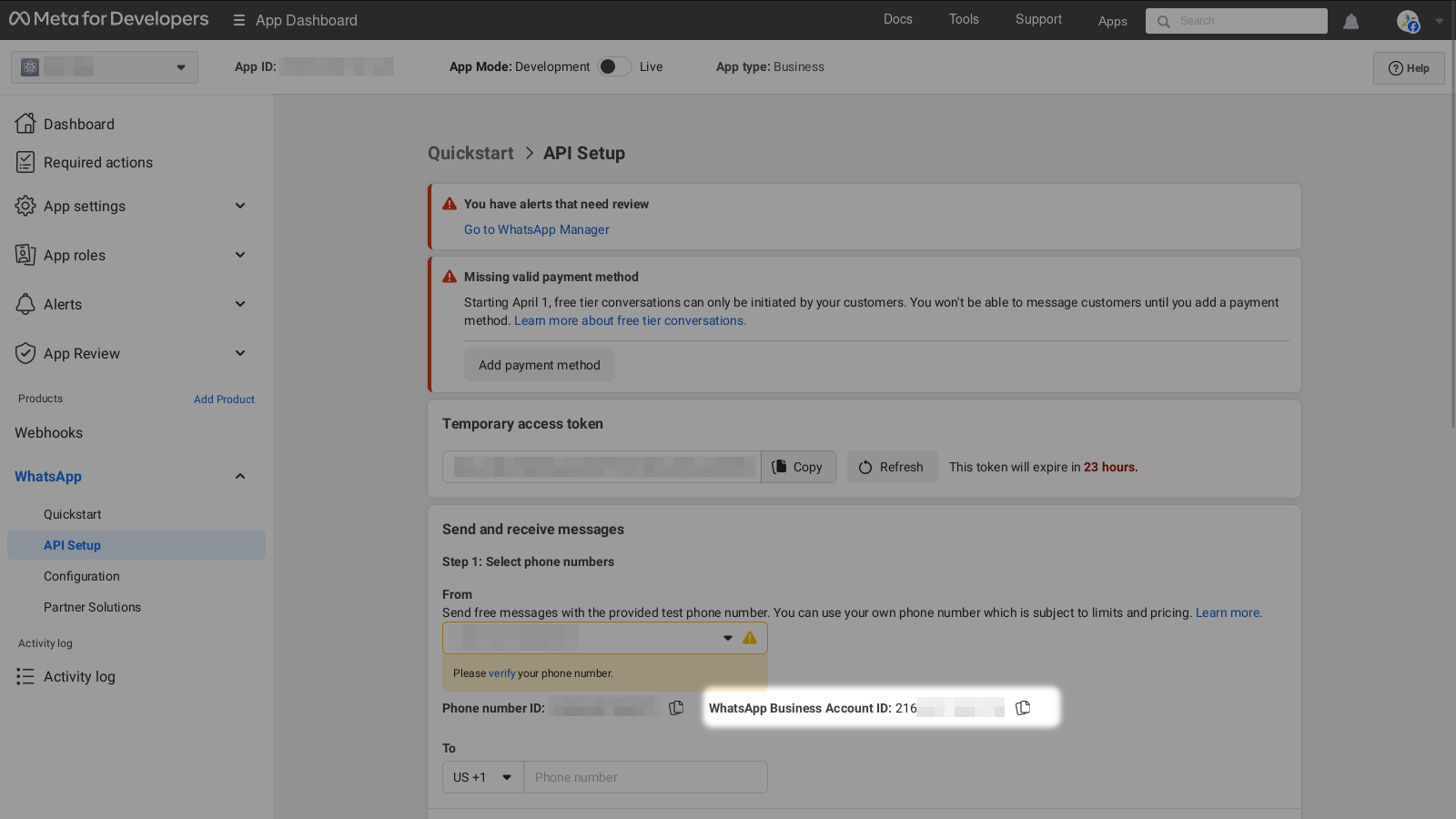
- Access Token
Enter the access token from your app. You can create it in the business settings under “System Users”. The system user has to have “Admin access”. Be aware that you have to copy the token, it is just displayed once!
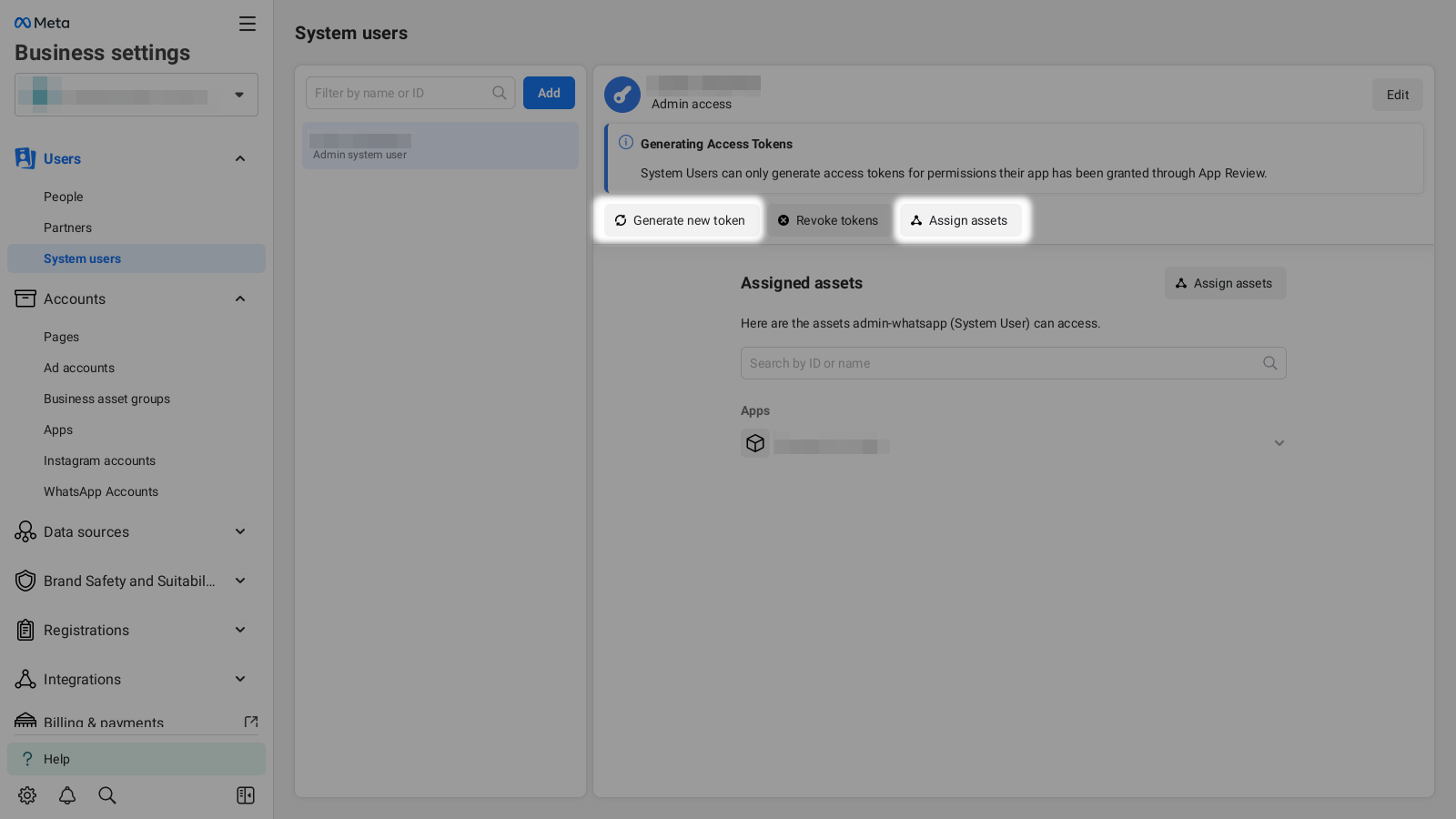
Choose your created app, an expiration date of the token (we recommend “Never”) and the permissions
whatsapp_business_managementandwhatsapp_business_messaging:- App Secret
Enter your app secret. You can find it in your app dashboard under “App settings > Basic” by clicking on the “Show” button:
After entering your data, click on Next. In the background, Zammad tries to fetch your assigned phone number, which you can select in the next step.
Step 2¶
The second step is about your phone number and messaging details:
- Phone Number
Choose the phone number you want to use for the channel. Zammad should have fetched the numbers which are assigned to your business app. If not, your credentials from step 1 may be wrong.
- Welcome Message
Here you can define an optional text message which is automatically sent to your customers when the initial message is received.
- Automatic Reminders
Here you can control whether the automatic reminders about the customer service window are sent to the customer when the window is about to expire.
For more information on 24-hour customer service windows, take a look at Meta’s conversation description under “Customer Service Windows”.
- Target Group
Here you can define the group in which the ticket should be created.
After entering your data, click on Submit. After this step, the WhatsApp channel is technically created. However, there is another important step to take.
Step 3¶
This third step is about telling WhatsApp where they should send their data:
Warning
If you don’t follow the instructions properly, your account shows up but you aren’t able to receive messages (because Meta/WhatsApp doesn’t know where to send them)!
- Callback URL
Click on the copy icon on the right side and head over to your WhatsApp business app. Enter the copied URL in the corresponding field in your app. You can find it in your “App Dashboard” under “WhatsApp > Configuration > Webhook > Callback URL” (see screenshot below). Paste it there.
- Verify Token
Copy this string too. Enter it directly below the pasted Callback URL.
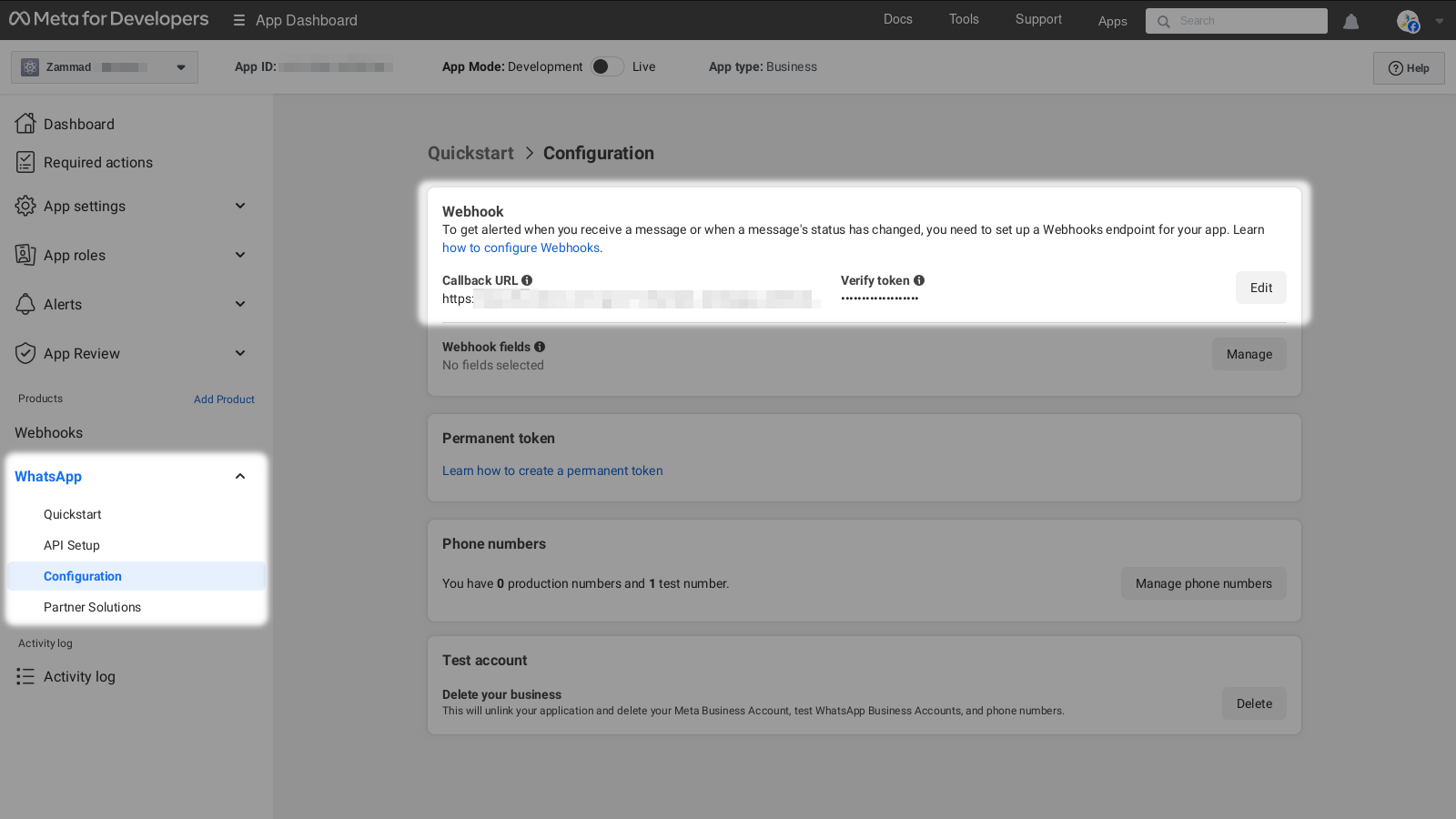
After entering your data, click on Verify and save which triggers a check if your system is accessible and configured correctly.
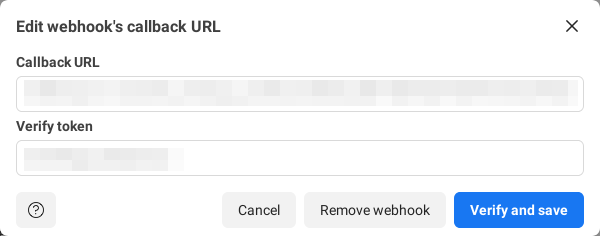
- Define webhook fields
Finally, go to the field below in the app dashboard and select “Manage” in the “Webhook fields” section. This is needed that you’ll get the message as content:

Subscribe to “messages” by clicking in the checkbox:
You should now see the selected “messages” under the “Webhook fields” caption as in the first screenshot.
After finishing this step, you can click on the Finish button in Zammad and you should now be ready to receive tickets from your WhatsApp channel!
